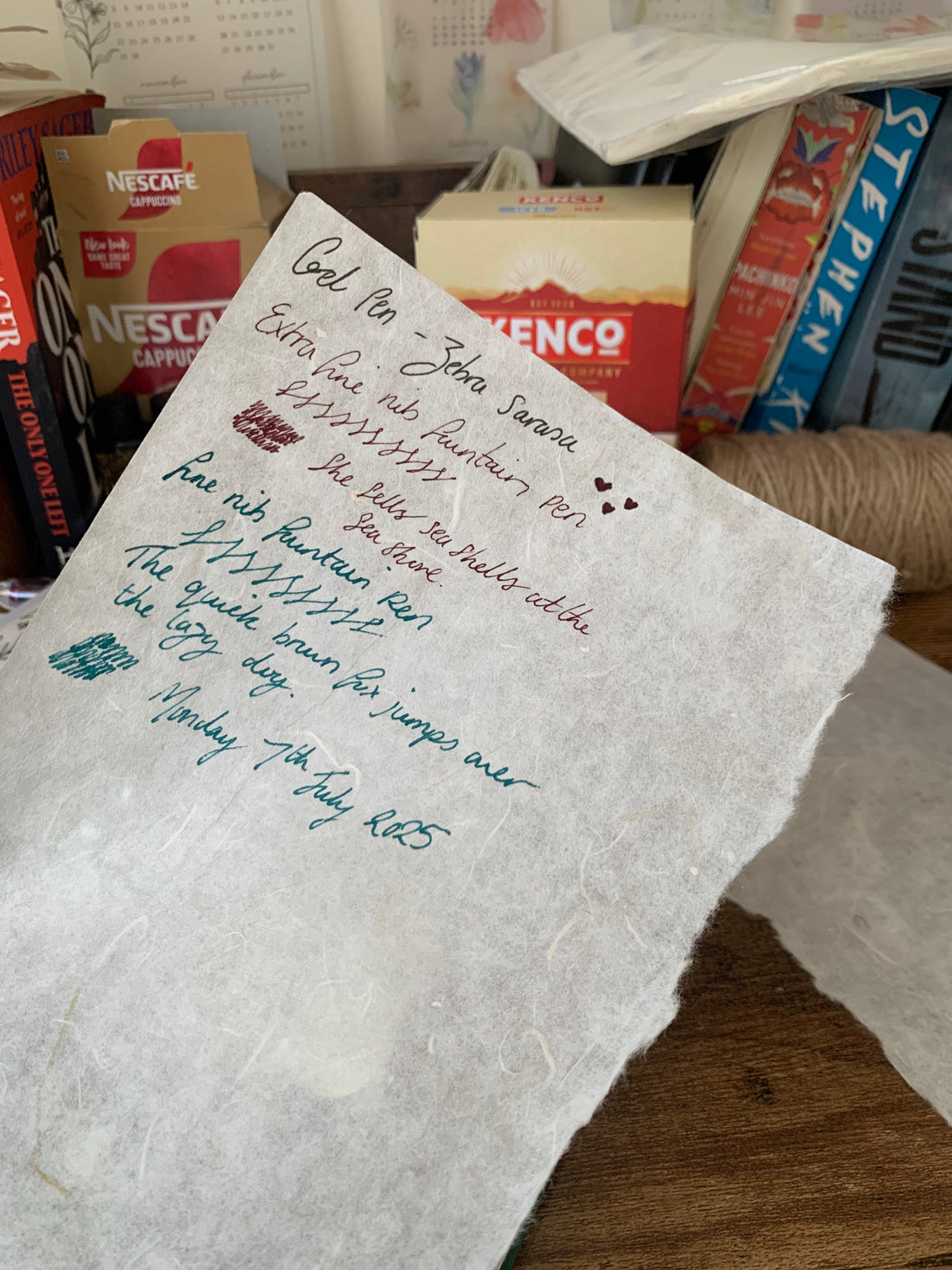
Something Special - Mulberry Paper
The Art of Mulberry Paper: Why This Ancient Craft Material Deserves a Place in Your Creative Arsenal
When you first touch mulberry paper, you'll understand why artists and crafters have been captivated by this material for centuries. The soft, fibrous texture beneath your fingertips tells a story of ancient papermaking traditions that continue to inspire modern creativity.
What Makes Mulberry Paper Special?
Mulberry paper, also known as kozo paper in Japanese papermaking traditions, is crafted from the inner bark of mulberry trees. This natural origin gives it qualities that set it apart from conventional papers:
Strength and Flexibility: Despite its delicate appearance, mulberry paper is remarkably strong. The long fibers create a paper that can withstand folding, stretching, and manipulation without tearing easily.
Unique Texture: The visible fibers create a beautiful, organic texture that adds depth and interest to any project. No two sheets are exactly alike, making each piece of work truly one-of-a-kind.
Absorbency: The porous nature of mulberry paper makes it excellent for techniques involving water, ink, or paint. It accepts media beautifully while maintaining its structural integrity.
The Ancient Art of Papermaking
Mulberry paper represents one of humanity's oldest papermaking traditions. For over 2,000 years, artisans have been harvesting mulberry bark, cooking it, beating it into pulp, and forming it into sheets. This traditional process, largely unchanged through the centuries, creates paper with a soul that machine-made alternatives simply cannot replicate.
The process begins with harvesting the young shoots of mulberry trees, typically in winter when the sap is down. The bark is stripped, boiled with ash or lime to break down the lignin, then beaten by hand to separate the fibers. Finally, the pulp is formed into sheets using a bamboo screen, creating the characteristic uneven edges and fibrous texture we associate with handmade paper.
Creative Applications
Bookbinding and Journals: Mulberry paper's strength makes it ideal for book covers, endpapers, and decorative elements. Its ability to fold cleanly while maintaining durability makes it perfect for accordion-style books and folded structures.
Mixed Media Art: The paper's absorbent qualities make it wonderful for watercolor, ink washes, and collage work. Artists love how it holds color while allowing for soft, organic effects.
Printmaking: Many printmakers choose mulberry paper for its ability to accept ink beautifully and its forgiving nature when being pressed.
Calligraphy: The traditional connection to Asian calligraphy makes mulberry paper a natural choice for brush lettering and ink work.
Decorative Crafts: From lampshades to gift wrapping, mulberry paper's translucent quality and beautiful texture make it perfect for decorative applications.
Working with Mulberry Paper
When working with mulberry paper, remember that its fibrous nature is both its strength and its character. Rather than fighting against the natural tears and rough edges, embrace them as part of the paper's charm.
For clean cuts, try tearing along a straight edge rather than using scissors – the natural fiber break often looks more pleasing than a sharp cut. When adhering mulberry paper, use minimal adhesive and work gently to avoid damaging the delicate fibers.
Caring for Your Mulberry Paper
Store mulberry paper flat in a cool, dry place, ideally between acid-free tissue or in a portfolio. While it's more durable than it appears, it can be affected by humidity and should be handled with clean hands to avoid oils transferring to the surface.
The Sustainable Choice
In our increasingly eco-conscious world, mulberry paper represents a sustainable choice. Mulberry trees are fast-growing and renewable, and traditional papermaking methods have minimal environmental impact compared to industrial paper production.
Why Mulberry Paper Matters
In a world of mass-produced materials, mulberry paper connects us to centuries of human creativity and craftsmanship. Each sheet carries the mark of its maker and the story of its creation. When you choose mulberry paper for your projects, you're not just selecting a material – you're participating in an ancient tradition that values beauty, craftsmanship, and the irreplaceable touch of human hands.
Whether you're a seasoned artist, a bookbinding enthusiast, or someone just beginning to explore creative pursuits, mulberry paper offers a unique combination of beauty, functionality, and history that can elevate any project. Its forgiving nature makes it perfect for beginners, while its unique qualities continue to inspire even the most experienced artists.
The next time you hold a sheet of mulberry paper, take a moment to appreciate the centuries of tradition in your hands. Feel the fibers, notice the subtle variations in texture, and remember that you're about to add your own chapter to this ancient story of creativity and craft.
